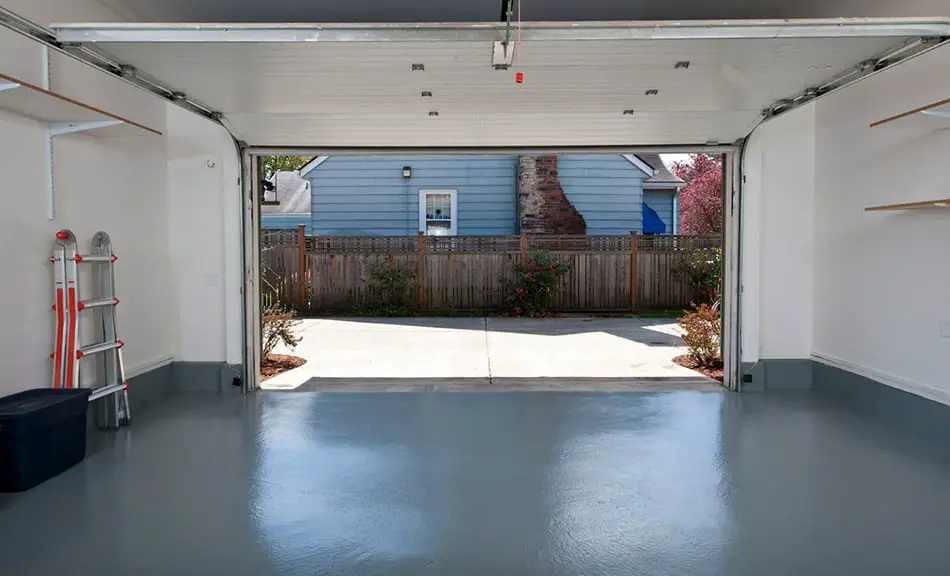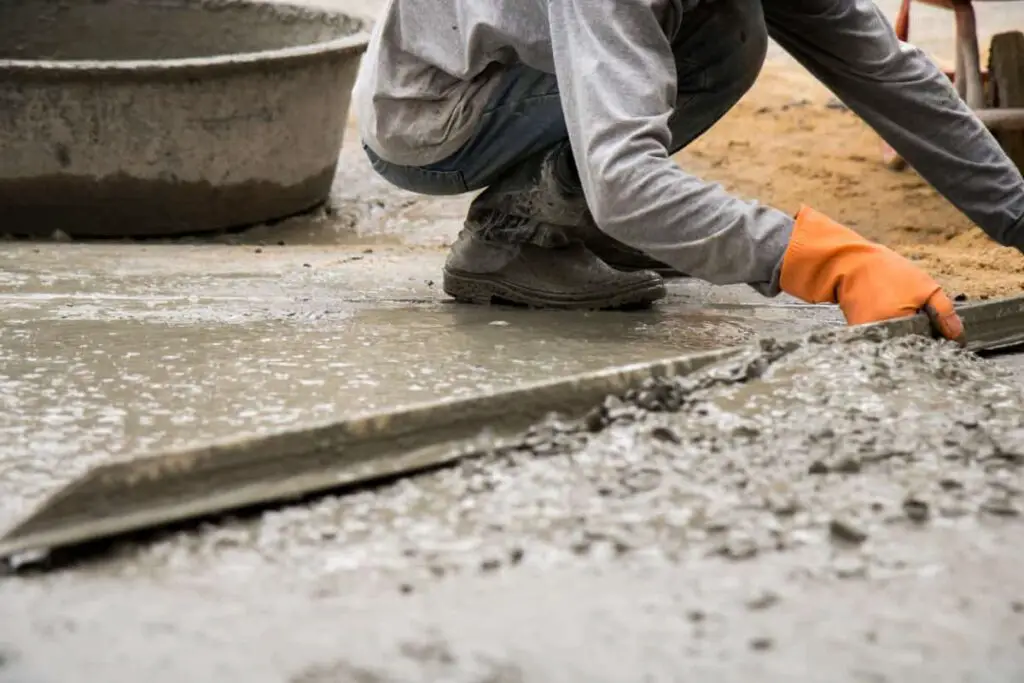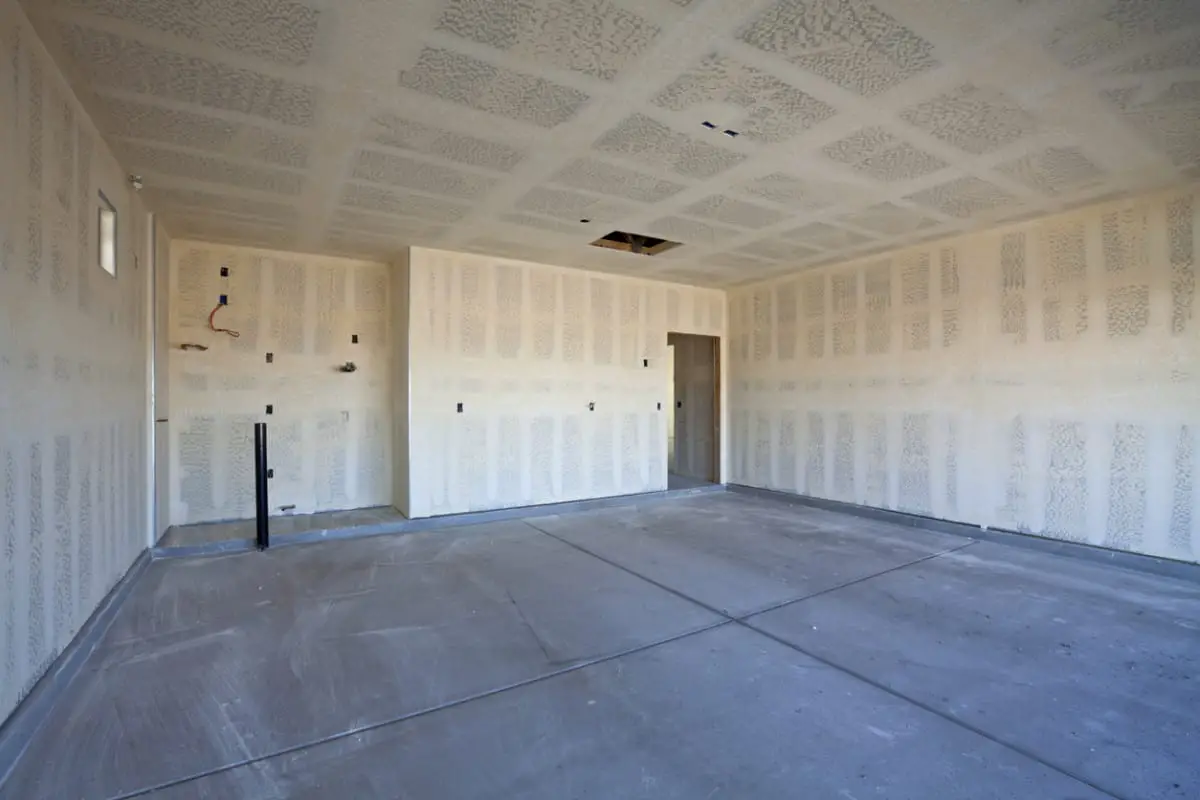Your garage floor might be made of concrete, which is relatively safe and very easy to maintain; however, it is porous and unsealed, and this causes it to crack and get stained easily. You’ve probably heard that you need to take care of your garage floor by sealing it or painting it; however, you are unsure if you need to take these precautions.
Garage floors need to be sealed to increase their longevity and durability, make the floor easier to clean, and prevent them from cracking or getting stained. Painting a garage floor requires the prior application of a sealant, which acts as a primer to protect the floor from moisture retention.
Your garage floors are exposed to many elements; therefore, it has to be protected to minimize damage. Taking care of concrete garage floors is very important, and as you read further, you will see why your garage floor needs to either be sealed or painted.
Do You Need to Seal or Paint Your Garage Floors?
Garage floors are one of the surfaces that are least cared for, and unfortunately, they are exposed to harsher conditions than you might be aware of. The frequent driving in and out of your garage is not the only factor responsible for the damage done to your garage floor. Other factors that can cause damage to your garage floor include:
- Moisture,
- Dirt,
- Extreme temperature changes,
- Poor maintenance, etc.
There is a need to either seal or paint your garage floor to protect it from these damaging elements and factors.
Sealing a garage floor is done by applying a layer of a concrete floor sealer on the garage floor to protect it; however, if you are thinking of only painting your garage floor, it will require a sealer or primer before it is painted. If you want to paint your garage floor, applying sealers will prevent moisture from seeping through the concrete floor. This water can weaken your concrete and also make your paint peel or wear off the floor.
External house paint can easily peel off when used on the concrete floor so, a good choice of paint is Masonry paint (link to Amazon). Masonry paint contains binders which prevent it from cracking and peeling off.
You may have a garage floor that is already painted, and you’re wondering if you can seal a painted garage floor. You can seal a garage floor even if it is already painted. Top concrete sealers are either clear or stained. You can use the clear concrete floor sealers, which makes your garage floor glossy but does not change the color of your garage floor.
Also, there are penetrating concrete sealers that do not change the look of your concrete floor at all. More about those types of garage floor sealers will be discussed later.
Most garage floors are made of concrete, which is susceptible to damage. So, if you don’t take good care of your garage floor and protect it from damaging elements, it can
- Acquire cracks,
- Get stained
- Look old and unattractive, etc.
This leads to the reasons why you should seal your garage floor.
Reasons Why You Need to Seal Your Garage Floor
There are various reasons why you need to seal/paint your concrete garage floor. Some of which are:
- Protecting the garage floor
- Keeping the garage floor clean
- Prevents stains
- Cleaning becomes easier
- The garage becomes more beautiful
- Increased Durability
- Extended Lifespan
Sealing Protects Your Garage Floor
Concrete floors are very prone to moisture because they are very porous. A concrete garage floor absorbs almost all the liquid that is poured on it, like
- Water,
- Oil, or
- Any other form of moisture.
Moisture can cause the growth of mold on your garage floor and can also cause cracks. Also, battery leakages and chemicals can cause concrete to deteriorate.
Sealing your concrete garage floor helps it to repel moisture because the sealer seals the pores and prevents it from absorbing any moisture. The sealer makes your concrete floor resistant to chemicals, mold, etc., which can cause deterioration of the floor surface. If your garage floor is colored, sealing it can prevent the color from fading or peeling off.
It Helps to Keep Your Garage Clean
Concrete floors are known to gather a lot of dust. Therefore, if you have a garage floor that is made from concrete, it means that dust can easily settle on the things in your garage. It can collect on your cars, workbenches, etc.
You can also get dust transferred into your house and your carpets. Dust can also trigger an allergic reaction in those who have are allergic to dust.
A layer of sealer will cover the concrete garage floor and will keep the dust and dirt down.
Sealing Your Garage Floor Prevents Stains
You might know how difficult it is to remove stains that oil and grease have easily left on your concrete garage floor. Concrete is not resistant to stains, and it attracts stains easily because of its porous nature.
Sealers can help protect your garage floor from any form of liquid that can stain it, like
- Chemical,
- Grease, and
- Oil.
When these liquids pour on a sealed floor, it is very easy to wipe them off completely.
A Sealed Floor Makes Cleaning Easier
Cleaning a sealed concrete floor is easier and faster. Since the sealer will make the garage floor accumulate less dirt on the surface, cleaning is easier. All that is required is merely wiping or mopping the surface of the sealed floor.
Sealing Enhances the Beauty of Your Garage
Concrete surfaces give off a dull look because they tend to absorb light. Using a glossy sealer to seal the concrete floor makes your garage look
- Shiny,
- Bright, and
- Beautiful.
Sealed floors have a way of transforming your garage into a beautiful and attractive environment.
It Increases the Durability of Your Garage Floor
Your garage floor is easily exposed to damaging elements, and this causes it to crack. Sealing your concrete garage floor can help increase its durability, thereby preventing damage.
Sealing Extends Its Lifespan
A concrete garage floor can easily suffer cracking and might eventually require a replacement.
However, when a garage floor is sealed, the sealer provides a layer that protects your garage floor from hazardous elements, thereby increasing its longevity.
How to Seal a Garage Floor?
It is a good idea to seal your concrete garage floor, as sealing has many benefits, as earlier mentioned. Depending on your choice, you might want to call a professional to seal your garage floor or, perhaps, do it yourself. Whatever your choice is, it is good to know how a garage floor is sealed.

Here are the steps to take to seal a concrete garage floor.
- Get the materials required for sealing
- Select the appropriate concrete sealer
- Clear and clean the garage floor
- Fill any cracks in the floor
- Apply the selected sealant
Get the Materials for Sealing Ready
It is essential first to know the things that are required to seal a garage floor. Getting these materials ahead makes you well prepared for the job. They include:
- Broom or Leaf blower
- Mineral spirits or an oil remover
- Cleaner like trisodium phosphate
- Scrubbing brush
- Paper Towels
- Concrete cleaner
- Concrete repair caulk
- Paintbrush
- Paint pad or Rolling brush
- A painting tray
- Sealer
Not all types of sealers are ideal for your concrete garage floor so choosing an appropriate sealer is very important.
Choose the Appropriate Concrete Floor Sealer
There are different types of sealants so, it is essential to select the floor sealer that is appropriate for you and the project. The different types of concrete sealers come in two categories:
- Topical Sealers, such as
- Acrylic sealers: Majorly used to seal interior floors. Acrylic sealers (link to Amazon) are very easy to apply. but it does not protect the garage floor as much as other sealers do.
- Epoxy sealers: Epoxy sealers (link to Amazon) give your garage floor a durable finish and a colorful and glossy appearance.
- Polyurethane sealers: These can be used over other seals for more durability. Polyurethane sealers (link to Amazon) also have UV protection, therefore, you don’t have to worry about your garage floor turning yellow, when exposed to sunlight.
- Penetrating Sealers, such as
- Siloxane sealers: These sealers are used mostly on exterior concrete like sidewalks; however, they can also be used for garage floors. Siloxane sealers (link to Amazon) help to prevent deterioration and they do not change the appearance of your concrete garage floor.
- Concrete densifiers: Concrete densifiers (link to Amazon) are mainly used to add strength to concrete. It also makes your concrete floor repel liquids.
The topical floor sealers are also known as “floor coatings” or “film-forming sealers.” They work by forming a protective layer that adheres to the surface of the concrete floor.
Topical sealers can either be clear or colored. The clear topical sealers do not change but enhances the look of your bare concrete or brings out the color of your concrete if it is stained. The colored sealers, on the other hand, change the look of your concrete.

The most popular of the topical floor coatings is the Epoxy sealer (link to Amazon). The epoxy sealer is more durable than an acrylic sealer, and it protects your garage floor surface against oil and grease. It also comes in different colors.
The penetrating sealers are a good choice if you do not want to change the look of your garage floor. It does not make it glossy or duller. These sealers penetrate the concrete surface to protect the floor against deterioration. Some of them are expected to last for up to 20 years or more.
Now that the things needed for sealing your concrete garage floor are known, then it is time to do the job.
Clean the Floor Surface
Before applying the sealer, it is important to take the following steps:
- Clear your garage floor of furniture and every other item. You can move these items and keep them safely in another room, bearing in mind that they might have to stay there for about a week.
- Sweep the garage thoroughly once you have removed all the items.
- Use mineral spirits or a pre-paint cleaner to clean the grease spills and any other stains.
- Once the garage floor looks clean, spray or pour a concrete cleaner on the floor and use a scrubbing brush to rub it into the concrete.
- Rinse the cleaner off the garage floor.
- Wait for the floor to dry completely.
Locate and Fill in Any Cracks in The Floor
Once you are done with the cleaning process and the floor is completely dry, it is essential to take the following steps:
- Check your floor for any cracks or holes.
- If there are cracks on your garage floor, you can fill them using a concrete repair caulk or other methods to fix a crumbling garage floor.
- After applying the repair caulk, you can use a towel to smooth it out.
- It is essential to wait until it is completely dry, not forgetting to follow the manufacturer’s instructions
Apply the Floor Sealant
Now that your floor is fully ready, it is time to apply the sealant you have selected. Below are the steps you should follow when using the sealant.
- Read and understand the manufacturer’s instruction on the sealer for an effective job while paying attention to the temperature and humidity required.
- Ensure the windows and doors are open for proper ventilation.
- Epoxy sealers come in two parts so, if you are using an epoxy sealer, mix the two parts. Ensure that you don’t take this step until you are fully ready to start the application process.
- Divide the room into sections so the application of the sealer can be easier.
- Use a paintbrush to apply the sealer along the edges of your garage floor because a rolling brush may not reach.
- Apply the sealer in the easily accessible areas using a rolling brush.
- Allow the sealant to dry for the period recommended by the manufacturer.
- Apply a second thin coat to ensure even coverage of the area.
- Let the second coat dry for the period recommended by the manufacturer before returning your items, walking, or driving on your sealed concrete floor.
Now that you know more about sealing a garage floor, you might wonder if your garage door also needs to be sealed. A garage door is not sealed the same way as a garage floor is. It is quite different, and you will know more about sealing a garage door as you read further.
Do Garage Doors Need to Be Sealed?
You might have noticed that garage doors easily open when there’s wind. Some garage doors also don’t provide full coverage as it leaves gaps around their edges.
Garage doors need to be sealed because a door seal covers the gaps and joints around the door and prevents the infiltration of water and wind and the entrance of pests.
The different types of garage door seals include:
- Garage door bottom seal: This is attached to the bottom edge of the garage door and closes the gap between the ground and your garage door.
- Garage door threshold seal: This is attached with adhesive to the floor underneath the door. It has the same function as the bottom seal; however, it is different in that it is attached to the floor and not the door.
- Garage door stop weatherstripping: A vinyl or rubber weatherstripping covers the gap around the sides and top of your garage door.
- Garage door panel weatherstripping: This covers the gap between the door panels.
Sealing garage doors have so many benefits, and it is important to know them to make an informed decision. Here are some of the reasons why you need to seal your garage door.
- Keeps pests away
- Prevents flooding
- Saves Energy
Sealing Your Garage Prevents the Entrance of Pests
When there are gaps around your garage door, it allows rodents like rats to squeeze their way into your garage. Insects can also crawl through these gaps. These pests carry illnesses, and they can also cause damage to the items you keep in the garage. They can also find their way into your living room or any other room in the house.
Sealing your garage door prevents these pests from entering your garage to cause any havoc.
It Prevents Flooding
Sealing your garage protects against extreme weather conditions, be it heavy rain or snow. When there is a heavy downpour, water can easily seep into your garage through the door. Also, during winter, melting ice can enter your garage through an unsealed door.
When your garage becomes flooded with water, your properties can get damaged, and the garage floor can be weakened, especially if your concrete floor is not sealed.
It is, therefore, important to seal your garage door to prevent any damages or worries about water flooding your garage,
It Saves Energy
If your garage door is not sealed, the gaps can allow heat to escape and let in cold air, which will affect the temperature of your garage. As a result, the low temperature of the air in the garage will require extra heating measures which will consume more energy and increase the bills.
A sealed, air-tight garage door will prevent heat from escaping, and less energy will be wasted.
Sealing or Painting Your Garage Floors
Sealing your garage floor not only increases the lifespan of your garage floor but also prevents stubborn stains and keeps your garage clean, and enhances the beauty of your garage. Also, sealing your garage door keeps rodents out, saves energy, and prevents flooding.
Therefore, it is essential to seal both your garage floor and doors so that your garage can be fully protected.
Check out our related article on “Is It Worth Painting or Epoxy Coating Your Garage Floor”.

